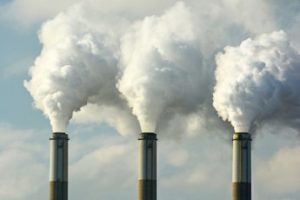As the EPA continues on its path toward repealing the Obama administration’s Clean Power Plan (CPP), the Agency is also beginning to build a foundation for issuing a new rule to regulate emissions of greenhouse gases (GHGs) from existing coal-fired power plants. As part of that process, the Agency has issued an advanced notice of proposed rulemaking (ANPRM) outlining its statutory authority to issue such a rule and requesting public comment on the form the rule should take.

As with the CPP, any new rule would contain federal emissions guidelines the states may use to achieve GHG emissions reductions. In this context, the EPA is particularly interested in receiving views on the different roles the Agency and the states should occupy in implementation of the rule.
Authority to Regulate
While opposed to the specifics of the CPP, EPA Administrator Scott Pruitt has never denied that the U.S. Supreme Court’s ruling in Massachusetts v. EPA affirmed that the Congress drafted the Clean Air Act (CAA) broadly enough so that GHGs constituted air pollutants within the meaning of the CAA. But in its proposed repeal of the CPP (October 16, 2017, FR), the Agency contended that it did not have CAA authority to establish emissions reduction targets based on factors outside a power plant (e.g., by increasing renewable energy elsewhere or changing dispatching patterns). Accordingly, in the ANPRM, the Agency is seeking comments on measures that can be applied to or at a stationary source.
“Under this reading, such measures must be based on a physical or operational change to a building, structure, facility, or installation at that source, rather than measures that the source’s owner or operator can implement on behalf of the source at another location,” states the EPA.
Heat Rate Improvements
In line with this thinking, the ANPRM provides two lists of available systems of GHG emissions reduction to improve heat rate—one comprising types of equipment upgrades and one consisting of best practices; all systems are plant-specific and would require no state to switch from coal-fired power to renewable energy, one of the major implied goals of the CPP. Improvement to heat rate is an approach to increase source-specific efficiency and, therefore, reduce GHG emissions.
State Authority
The ANPRM shows a strong preference for state authority in any replacement regulation.
“Each state has its own unique circumstances to consider when regulating air pollution emissions from the power industry within that State,” says the Agency. The EPA is, in fact, considering an approach where the Agency determines the best system of emission reduction ((BSER), the key CAA term on which GHG reduction guidelines for power plants must be based) but then “allows the sates to set unit-by-unit or broader emission standards.” The CPP did not provide the states with the authority to set their own GHG reduction limits.
Topics for Comment
To summarize, the EPA is soliciting comment on the following main topics:
- The roles and responsibilities of the states and the EPA in regulating existing power plants for GHG;
- Identifying the BSER that can be implemented at the level of an affected source;
- Whether guidelines for emissions of GHGs should include presumptively approvable limits;
- How much discretion states have to depart from EPA’s emissions guidelines;
- Potential interaction with other CAA regulatory programs, such as New Source Review; and
- Any other comment that may assist the Agency in considering setting emissions guidelines for states to follow to limit GHG emissions from existing power plants.
The ANPRM is here.
